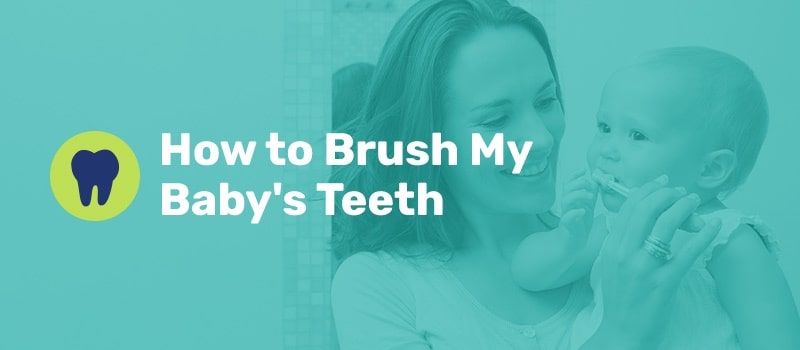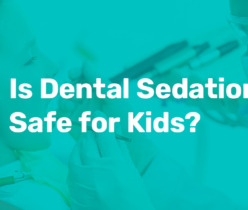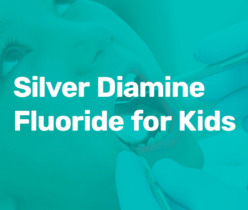Though it’s rare for babies to have teeth at birth, you should start thinking about your baby’s dental care early. Besides introducing good habits from the beginning, taking care of your baby’s mouth keeps them healthier and happier as they grow. Even before their first dental visit — which should happen by their first birthday or within six months of their first tooth eruption — it’s crucial to brush baby teeth. It keeps your child’s mouth healthy and introduces them to good oral hygiene.
We understand your baby’s daily routine is already busy, so feeling on the fence about adding another step is completely valid. However, learning how to brush a baby’s teeth will have lifelong benefits for your child, making it a worthwhile habit to build.
Wondering where to start? You aren’t alone. Even experienced parents find themselves swapping ideas for how to coax a little one to use a toothbrush. But what comes before that? And how important is oral hygiene for a baby? Keep reading to learn how to brush baby teeth the right way.
Table of Contents
- Should I Brush My Baby’s Gums?
- What Are the Essentials of Oral Hygiene for Babies?
- When Should I Start Brushing My Baby’s Teeth?
- When Should I Take My Baby to the Dentist?
- How Should I Brush My Baby’s Teeth?
- When Should You Use Toothpaste for Babies?
- What Kind of Toothbrush Should My Child Use?
- What’s the Best Way to Brush My Baby’s Teeth?
- What Should I Do If My Child Doesn’t Want to Brush?
- Why Is Brushing Baby Teeth Essential?
- How Can Sprout Pediatric Dentistry & Orthodontics Help?
Should I Brush My Baby’s Gums?
The short answer to this question is yes — it’s never too early to begin brushing your little one’s mouth. Even before their first tooth pokes through their gums, bacteria begin to grow in your baby’s mouth. Sugars in formula or breast milk feed these bacteria, leading to potential overgrowth. These bacteria produce acid, which breaks down teeth’s protective mineral coating. While everyone has some bacteria in their mouth, your goal should be keeping a balance that sets your little one up for healthy teeth and gums as they grow.
During the foundational months of your child’s life, it’s safest to take bottles of milk or juice away before they doze off. When a baby falls asleep while sucking on a bottle, the sugary liquid lingers in their mouth for longer, promoting bacterial growth and potentially leading to cavities later.
What Are the Essentials of Oral Hygiene for Babies?
One of the best ways to build an oral hygiene foundation for your bundle of joy is to establish a baby dental care routine from the beginning. Besides laying the groundwork for good hygiene habits later, it’s a fantastic way for parents to interact with their little ones. Cleaning your baby’s mouth can also become a cherished time for snuggling and bonding with your child.
The goals of this routine should be to:
- Establish a habit of brushing at least twice a day.
- Keep your baby’s mouth clean and protected from bacteria.
- Help your baby get used to the feeling of having a clean mouth.
These goals are simple enough, but many parents aren’t sure when to start brushing their baby’s teeth and gums or how to teach a baby to brush teeth.
Dental Care for Babies 0 to 6 Months Old
When babies are born, they most likely don’t have teeth, so there’s no reason to use a toothbrush and toothpaste to clean a newborn’s mouth. However, brushing baby gums is an excellent way to establish the habit of cleaning their mouth regularly.
Brushing your newborn baby’s gums can be quick and easy:
- After feeding, take a clean, damp washcloth or baby gum brush, and gently run your index finger over your baby’s gums.
- Since newborns eat several times a day, aim to do this at least twice daily — just as they would if they were brushing.
While a washcloth will do the job just fine for brushing newborn gums, you could also try using terrycloth finger cots. These disposable finger covers are soft and do a great job of cleaning babies’ gums. You can find them in just about any drugstore.
On average, babies get their first tooth at around 6 months old. The weeks leading up to that first tooth may be full of drooling, chewing and discomfort for your baby. While reducing regular gum cleanings may be tempting at this stage, do your best to keep your baby’s oral care routine consistent during teething.
Once your baby’s first tooth arrives, brushing takes on a new level of importance. As you clean your baby’s mouth, you can also gently massage their tender, teething gums. Applying gentle pressure to the inflamed gums can go a long way toward easing the pain and discomfort of teething.
Remember, because dental decay comes from bacteria that live in the mouth, it’s possible to pass this on to your child. The last thing you want is to share bacteria with your child that will harm their teeth and gums. So, refrain from sharing cups or utensils, don’t clean their pacifier off in your mouth and never use your mouth to test the temperature of their bottle.
Dental Care for Babies 6 to 12 Months Old
When your baby’s first tooth has pushed through, it’s time to introduce a soft-bristled toothbrush and a small amount of child-friendly toothpaste. Follow these simple steps to ensure you’re properly cleaning your baby’s new little teeth:
- Soften the toothbrush bristles under lukewarm water.
- Use a rice-grain-sized amount of fluoride toothpaste.
- Brush your little one’s teeth gently in circular motions.
- Do this brushing routine twice daily for two minutes at a time.
Now that teeth are coming in, it’s time to think about scheduling your baby’s first dental cleaning. Since tooth decay doesn’t discriminate by age, the American Dental Association recommends children receive their first visit to a dentist by their first birthday.
During this phase, you’ll also want to begin to wean your child off a bottle and onto a cup. As babies become more mobile, parents tend to allow their children to move around with their bottles and sip on them at their leisure. This habit increases their mouth’s exposure to the sugars in formula, breast milk and juice and places them at higher risk for tooth decay.
Now is also a perfect time to establish a routine around drinks and snacks:
- As soon as your baby is old enough to hold a cup, transition to a sippy cup.
- Don’t allow them to hold onto the cup for prolonged periods.
- If they’re thirsty, place them in their high chair, allow them to drink until they’ve had enough, then take the cup away.
- Resist the temptation to allow your child to fall asleep with a bottle or a cup.
If you’re struggling to establish a soothing sleep routine, there are plenty of other ways to help your child fall asleep.
When Should I Start Brushing My Baby’s Teeth?
Stick to the gum-washing method described above until your baby cuts their first tooth. There’s no reason to use a toothbrush yet, and, truthfully, using one on their bare gums might not feel very pleasant.
Once your baby cuts their first tooth, it’s time to switch to a soft-bristled brush designed specifically for infants and young toddlers, but don’t stop washing their gums! Even once their first tooth arrives, your baby’s gums will still be vulnerable to bacteria. Washing their gums as part of your regular oral hygiene routine is essential until they have more teeth covering the area of their gums. It will also help ease their discomfort as their teeth continue to break through their gums.
When Should I Take My Baby to the Dentist?
Once your baby’s first tooth arrives, it’s time to schedule their first dental appointment. Some parents might think this is unusual because they picture a dentist or hygienist hovering over their tiny baby with the same tools used on adult patients. But this isn’t what happens at a baby’s first dental visit. The purpose of the first visit to the dentist is to establish good baby dental care habits, check the baby’s oral health and set a baseline for later on. It also helps encourage your child not to be nervous around the dentist as they get older.
Establishing your child with a pediatric dentist is also an excellent way to emphasize your commitment to their oral health. Pediatric dentists have extensive experience treating children, which makes them a fantastic resource for parents. They know all sorts of things about kids’ teeth! They also prioritize your child’s long-term oral health, which means they spend a lot of time helping them get comfortable with dental visits, brushing and the basics of good oral hygiene.
How Should I Brush My Baby’s Teeth?
Brushing baby teeth should be a simple process. However, every parent knows that babies squirm, fuss or fall asleep before they should. They protest having things in their mouth or try to grab the toothbrush for a closer look. So what’s a parent to do?
First and most crucially, take a deep breath and relax. While your baby’s oral hygiene is essential, it’s not something to lose sleep over. You’ve already proven you care since you’re reading an article about how to clean baby teeth. Now that you’ve calmed down, let’s answer some of the most common questions we get about how to keep your baby’s teeth clean.
1. When Should You Use Toothpaste for Babies?
Before your baby cuts their first tooth, wipe their gums down twice daily with a clean, damp washcloth. There’s no need to use toothpaste or any other products in their mouth. Once your baby begins to cut teeth, you’ll want to switch to a soft-bristled toothbrush. Initially, you can stick with water, and once they have several teeth, you can add a tiny smear of fluoride toothpaste to your baby’s brushing routine, as recommended by the American Academy of Pediatrics.
There are specific kinds of toothpaste designed for young children. However, many of these do not contain fluoride, a mineral that prevents tooth decay. Fluoride prevents bacterial acid from breaking down the protective coating on your baby’s teeth. It also puts new essential minerals back into their teeth to reverse damage.
2. What Kind of Toothbrush Should My Child Use?
Some parents prefer to transition from a washcloth to a soft-bristled toothbrush, while others prefer to ease the transition by using silicone finger brushes for baby teeth. Finger toothbrushes for babies have nubs that help clean teeth and feel good on the baby’s gums. Once your child is ready for a baby toothbrush, there are plenty of options to start with.
Children’s toothbrushes have clear labels stating the age and stage they’re best for, so you won’t be clueless in the middle of the drugstore. Toothbrushes for babies and younger toddlers often have a broader handle that’s easy to grip, and they come in various colors and characters to encourage little ones to brush. While silicone brushes are fun and comfortable for the gums, they are not as efficient as nylon-bristled brushes at removing bacteria buildup or plaque from the teeth.
3. What’s the Best Way to Brush My Baby’s Teeth?
The easiest way to brush your baby’s teeth is to have them lie down on the floor, bed, changing table or crib. If your baby is lying down with their head supported, you have one free hand to lift their lips and cheeks out of the way while your other hand brushes the teeth. Be sure to get the front surfaces, as well as the hard-to-see back surfaces and grooves. Because babies are often squirmy, it may take two adults to get the job done — one adult to hold the baby and the other to focus solely on brushing.
4. What Should I Do if My Child Doesn’t Want to Brush?
As your baby becomes more active and transitions into toddlerhood, convincing them to stay still long enough to brush their teeth can be challenging. That doesn’t mean oral hygiene should fall by the wayside! Consider these tips if you struggle to hold your child’s attention during brushing.
- Customize their brush: Allowing your child to pick out their toothbrush at the store will help them look forward to cleaning their teeth.
- Keep things fun: Incorporate a silly song or dance into your routine, or watch a video of their favorite TV character brushing their teeth.
- Pick the right toothpaste: If your child doesn’t like the taste of your current toothpaste, switch to a different child-friendly fluoride option.
Above all else, stay calm. If you get upset or frustrated, your child will start to dread their brushing routine because they associate it with tension. If you want to see your child brushing their teeth regularly and willingly in the future, you must establish healthy habits now, and that is best achieved with positive associations.
Why Is Brushing Baby Teeth Essential?
As a parent, you set the tone for how your child will approach oral hygiene as they grow. When you prioritize it, they will learn its importance. It’s not difficult or time-consuming to incorporate brushing into your infant’s routine — and it can save your child a lot of pain and struggle if you do.
How Can Sprout Pediatric Dentistry & Orthodontics Help?
At Sprout Pediatric Dentistry & Orthodontics, our goal is to support families through their oral health journey. From the first tooth to braces and everything in between, we love teaching parents and their children how to have a healthy mouth throughout their lifetime. In serving families throughout Portland, we’ve committed to answering questions and helping you establish a solid dental routine from the beginning.
Just as you’ll need a pediatrician for all your little one’s health needs, we encourage you to find a pediatric dentist who can help you establish a care routine from early infancy. Because Sprout Pediatric Dentistry & Orthodontics is a pediatric dental practice, we have lots of ways to teach little ones how to relax at the dentist and enjoy taking responsibility for their oral hygiene, and we love sharing those tips with parents because we know how essential it is.
Call us today to set up your baby’s first dental appointment.
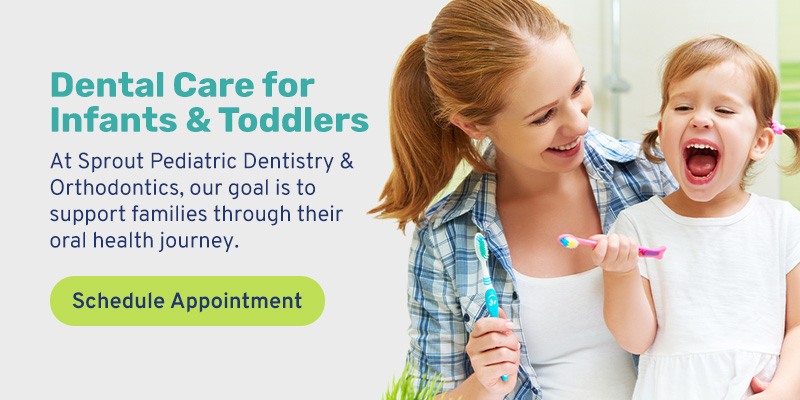
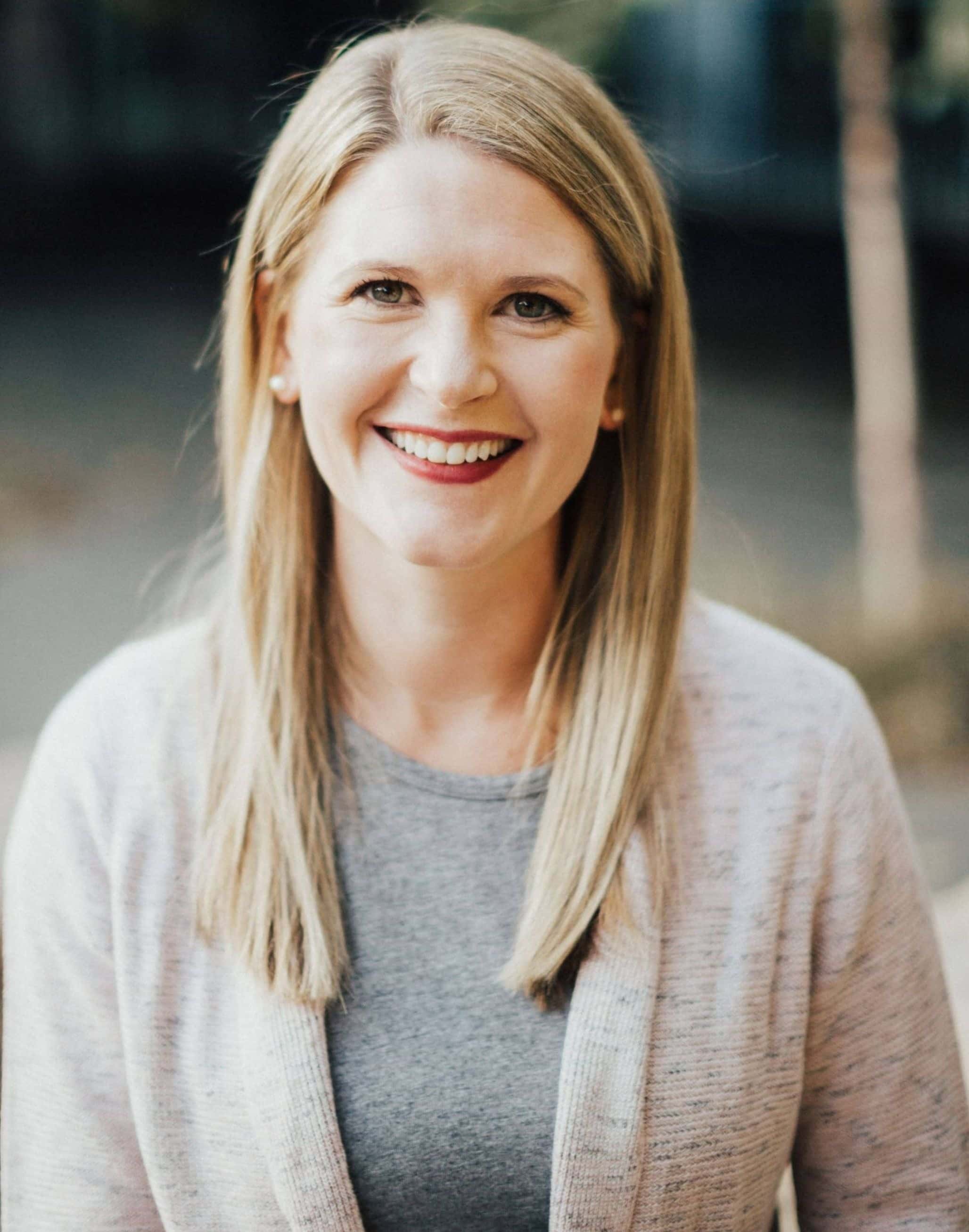
Dr. Dana grew up in Portland and went to Temple University in Philadelphia, PA for dental school. She then moved to Anchorage, AK for her residency in Pediatric Dentistry. Dr. Dana takes a holistic approach to pediatric dentistry & is able to use her own parenting experience to sympathize and understand each family’s unique dynamic.


